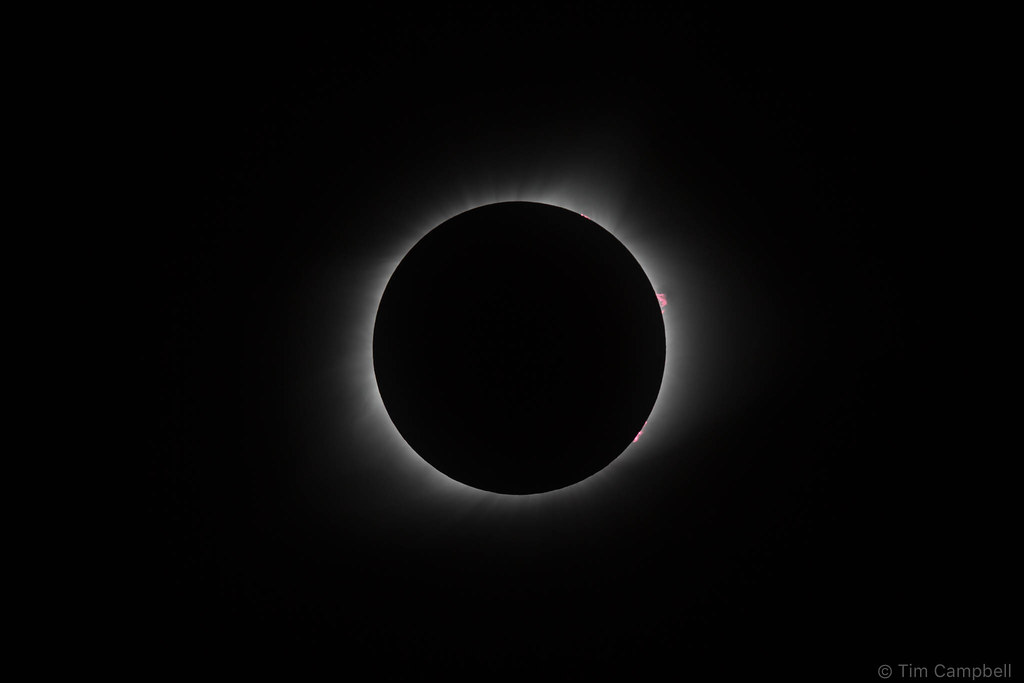TCampbell
Been spending a lot of time on here!
- Joined
- Mar 31, 2012
- Messages
- 3,614
- Reaction score
- 1,558
- Location
- Dearborn, MI
- Can others edit my Photos
- Photos OK to edit
I traveled 1400 miles to get to Casper because of the high probability of clear weather. I was rewarded with these.
There actually were a few thin clouds between the camera & sun. It's not visible in the shorter exposures, but it is visible in the longer exposures (it causes the interior of the eclipse where the moon should be black to glow with light - so I'll probably have to stack composite an image to get the results I want). Anyway... here are a few shots.

Chromosphere Prominences during the Total Solar Eclipse 2017 by Tim Campbell, on Flickr

3rd Contact Diamond Ring from 2017 Total Solar Eclipse by Tim Campbell, on Flickr

Chromosphere at 3rd Contact during Total Solar Eclipse 2017 by Tim Campbell, on Flickr

Solar Corona with Prominences during Total Solar Eclipse 2017 by Tim Campbell, on Flickr

2017 Total Solar Eclipse from Casper Wyoming (HDR) by Tim Campbell, on Flickr
All but the last image are single frames. The final image is an HDR composite.
There actually were a few thin clouds between the camera & sun. It's not visible in the shorter exposures, but it is visible in the longer exposures (it causes the interior of the eclipse where the moon should be black to glow with light - so I'll probably have to stack composite an image to get the results I want). Anyway... here are a few shots.

Chromosphere Prominences during the Total Solar Eclipse 2017 by Tim Campbell, on Flickr

3rd Contact Diamond Ring from 2017 Total Solar Eclipse by Tim Campbell, on Flickr

Chromosphere at 3rd Contact during Total Solar Eclipse 2017 by Tim Campbell, on Flickr

Solar Corona with Prominences during Total Solar Eclipse 2017 by Tim Campbell, on Flickr

2017 Total Solar Eclipse from Casper Wyoming (HDR) by Tim Campbell, on Flickr
All but the last image are single frames. The final image is an HDR composite.













![[No title]](/data/xfmg/thumbnail/42/42273-78c0ae886bd5e6d47580353f398c92b9.jpg?1734176676)
